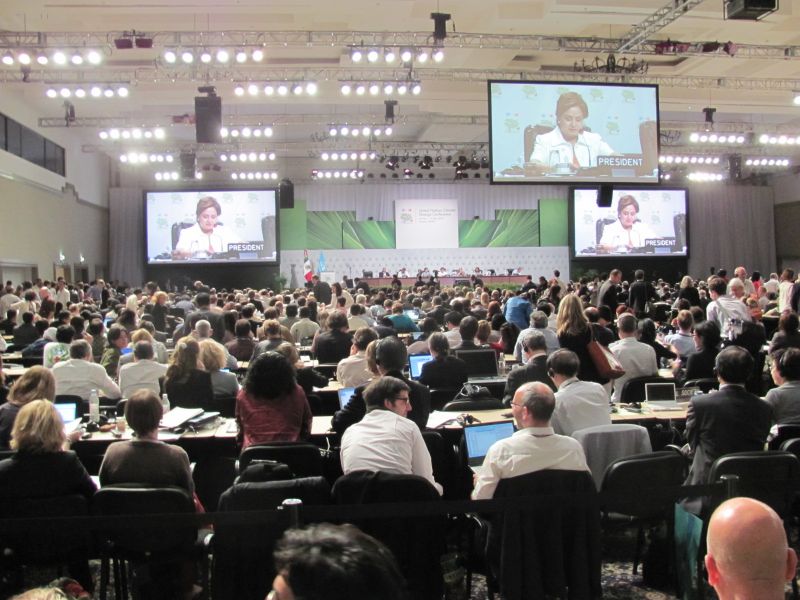By all accounts, the progress made on climate in Cancun last week was a modest step. At the conclusion of the summit, 193 world leaders formalized an agreement that follows through on some of the commitments they made at the climate summit the year before, but punted a lot of the big questions to the future. Among the more concrete steps was the official creation of a global climate fund—though much of the specifics on that front are also still unclear.
The agreement includes the establishment of a $100 billion fund by 2020 that will help poor countries both adopt clean-energy technologies AND? avoid the carbon-intensive development that got the world stuck in this climate change problem in the first place. The fund would also help those countries adapt to the changes that are already taking place and may be unavoidable in the future.
Developed nations agree to “mobilize” billions of dollars for what has been dubbed the “Green Climate Fund.” But one of the key questions still lies in the use of that word, “mobilize.” This doesn’t just mean that developed countries are going to donate that amount through public funds; given the economic situation many governments are facing right now, few are expecting that to happen. Instead, those funds are probably going to come though more innovative mechanisms.
To address this issue of where those funds could come from, UN Secretary General Ban Ki Moon earlier this year formed the High-Level Advisory Group on Climate Change Financing, which was tasked with finding new ways of generating money for the fund. The options the group listed included an emission fee on international aviation and shipping, the revenues from the sale of emission permits, and the removal of subsidies for fossil fuels. But leaders gathered in Cancun didn’t really address the question of where the funds would come from in their final agreement. So, right now, the fund is basically an empty account, and developed countries still have to figure out how they’re going to put money in it.
Development groups are pleased, however, that they did establish the fund, and that the oversight bodies for it will represent a balance between developing countries and the donors. A transitional committee, which will spend the next year (or more) determining how exactly the fund will work, will represent a realistic balance between the developed/developing world, with a focus on the areas most impacted by climate change. It will have 40 members, 15 from the donor countries and 25 from developing nations, and will include seven members from Africa, seven members from Asia, seven members from Latin America and the Caribbean, two members from small islands, and two members from the bloc of least developed countries. The fund’s governing board—the group that will decide how to dole out the funds when it is actually set up—will have 24 members, half each from developing and developed countries.
But there are a couple of big questions and potential issues. One is the role of the World Bank in the fund, as the agreement designates the multinational bank as the interim trustee of the fund. The interim trusteeship is scheduled for review three years after the fund is operational. The United States negotiating team fought to get the World Bank as the trustee, but developing countries aren’t particularly enthusiastic about the bank playing any role in the fund. For one, the Bank specializes in loans, rather than donations. And it has a dismal record on energy financing, most recently backing a massive new coal-fired power plant in South Africa earlier this year.
The World Bank, said Siziwe Khanyile of the Groundwork Project in South Africa in a statement, “should be allowed no role in the delivery of climate finance.” “The World Bank has already harmed Africa enough, it cannot be trusted with the responsibility for responding to climate change, which threatens many Africans’ very survival,” said Khanyile.
There are also concerns about how the money will be spent. The short-term finance that countries have already started providing is going overwhelmingly to mitigation efforts, while just 10 percent is going to adaptation, despite the fact that the expenditures are supposed to be balanced between the two. And there is a good deal of concern that most of the funds are actually just repackaged from other development aid programs rather than representing new and additional spending. An analysis from the World Resources Institute found that many of the pledges made so far are “restated or renamed commitments already made in the past.”
That’s not to say groups aren’t happy that the fund exists; whether it would even get off the ground was in question for most of the two-week negotiations. Its establishment is among the more noteable outcome of the two-week summit.














